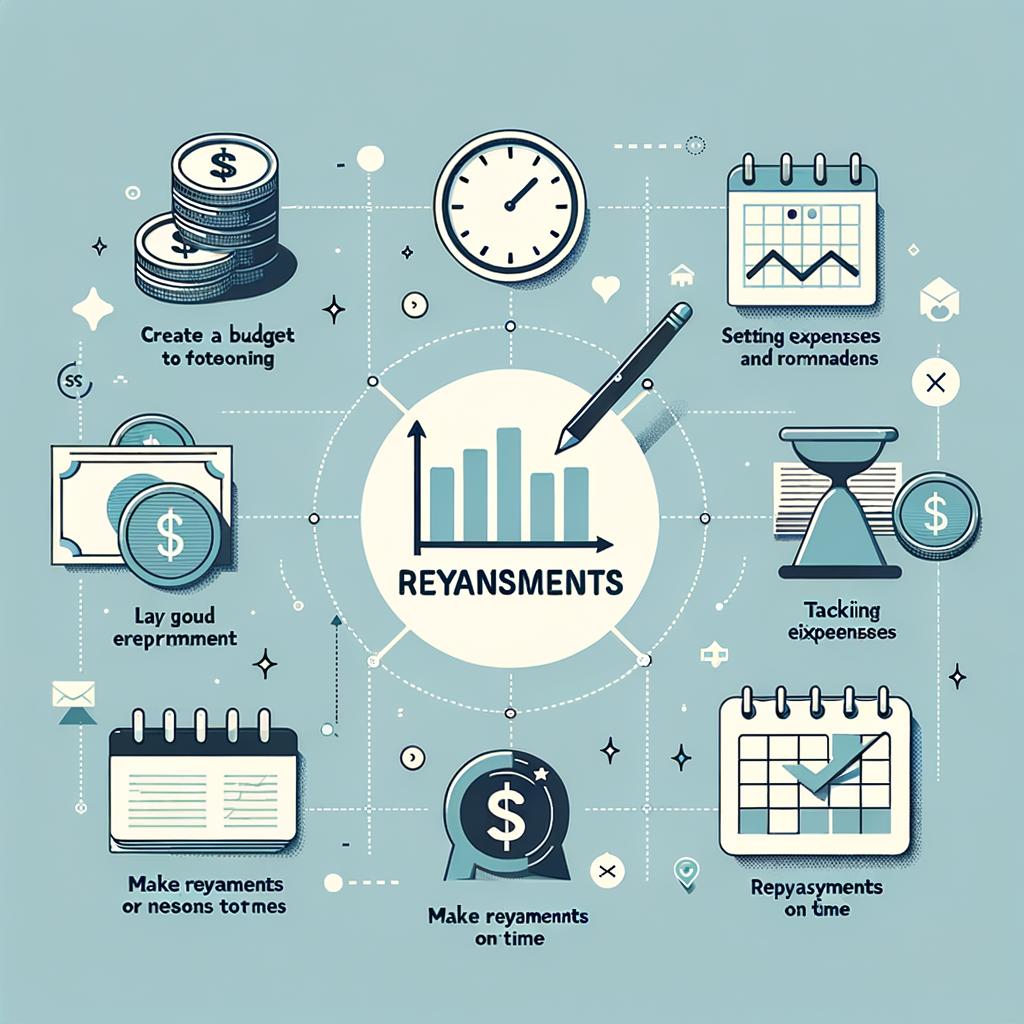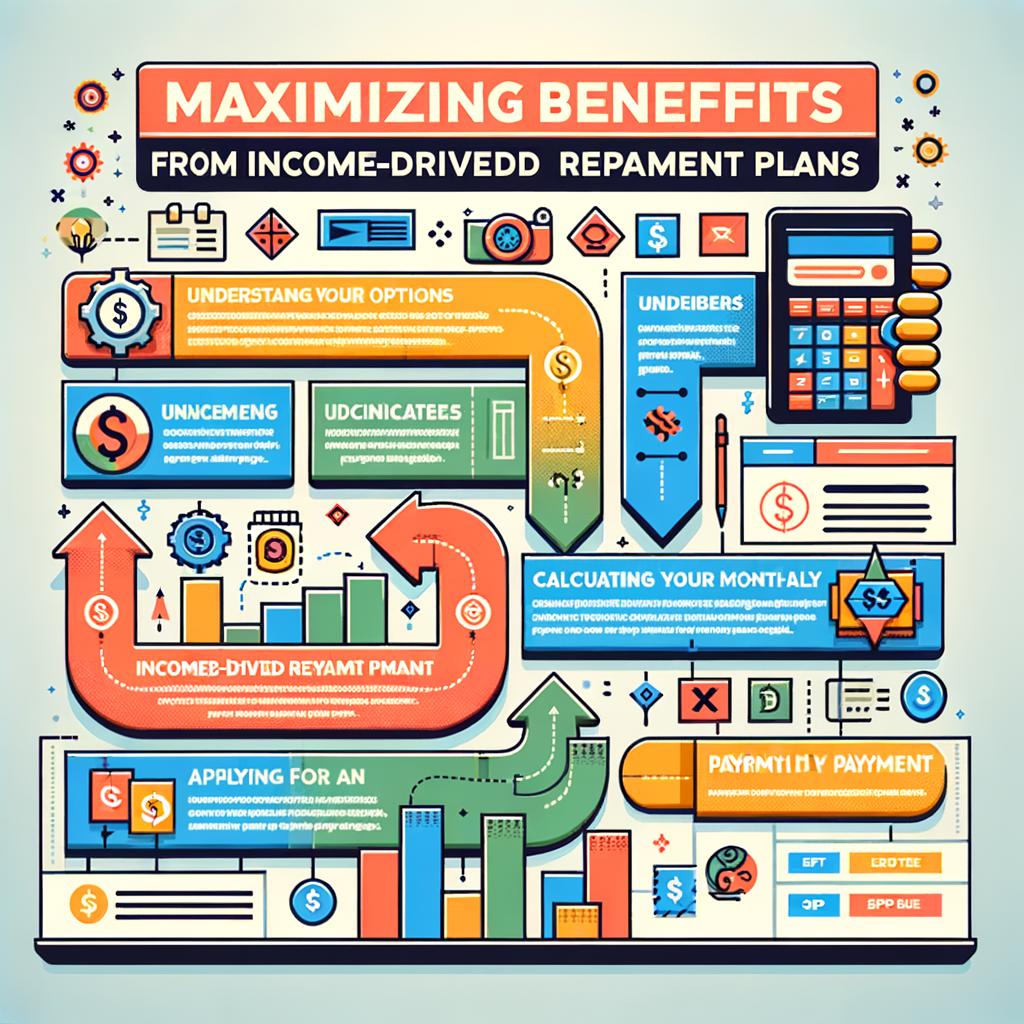Picture this: a freshly minted diploma in one hand, a hopeful glint in the eye, and a surge of boundless ambition coursing through veins. Yet, tacked onto this exuberant sense of possibility is the unmistakable weight of student loan debt—a steadfast companion for millions of graduates stepping into the world. As the cost of higher education continues to soar, the burden of student loans has reached unprecedented heights, calling for immediate, strategic action. Whether you are navigating repayment plans, seeking forgiveness programs, or simply trying to understand your options, a wealth of student loan debt resources stands ready to guide you towards a brighter financial future. With this article, let’s embark on a journey to demystify the labyrinth of student loan debt—one resource at a time.
Table of Contents
- Navigating Loan Forgiveness Programs
- Expert Tips for Managing Repayments
- Scholarships and Grants: Free Money Opportunities
- Maximizing Benefits from Income-Driven Repayment Plans
- Q&A
- Key Takeaways

Navigating Loan Forgiveness Programs
Student loan forgiveness programs can offer significant financial relief to borrowers. Understanding the different options and eligibility requirements is key to navigating these programs effectively. Let’s dive into several types of loan forgiveness opportunities that can assist in managing student loan debt.
Public Service Loan Forgiveness (PSLF)
- PSLF is designed for borrowers working in qualifying public service jobs, including government organizations and nonprofits.
- To qualify, you must make 120 qualifying monthly payments under a qualifying repayment plan while working full-time for a qualifying employer.
- This program forgives the remaining balance on your Direct Loans after you’ve made the required payments.
Teacher Loan Forgiveness
- This program is for teachers who work full-time for five complete and consecutive academic years in low-income schools or educational service agencies.
- Highly qualified teachers can have up to $17,500 of their Direct or FFEL Subsidized and Unsubsidized Loans forgiven.
Income-Driven Repayment (IDR) Forgiveness
- IDR plans cap your monthly payment at a percentage of your discretionary income and offer forgiveness after 20 or 25 years of qualifying payments.
- There are four types of IDR plans: REPAYE, PAYE, IBR, and ICR.
The following table summarizes the key points between these plans:
| Plan | Payment Cap | Repayment Period | Forgiveness Period |
|---|---|---|---|
| REPAYE | 10% of discretionary income | 20 or 25 years | After 20 or 25 years |
| PAYE | 10% of discretionary income | 20 years | After 20 years |
| IBR | 10-15% of discretionary income | 20 or 25 years | After 20 or 25 years |
| ICR | 20% of discretionary income | 25 years | After 25 years |
State-Specific Loan Forgiveness Programs
- Many states offer loan forgiveness programs for occupations in high demand, such as healthcare, education, and public service.
- Eligibility requirements and benefits vary by state, so it’s important to check with your state’s education department or financial aid office.
Biden’s Loan Forgiveness Plan
- The plan proposes forgiving $10,000 for most borrowers and up to $20,000 for Pell Grant recipients.
- The application process and specific eligibility criteria are still being finalized.
By understanding these different loan forgiveness options, you can make more informed decisions on managing your student loan debt. Be sure to regularly consult with your loan servicer to ensure you remain on track for loan forgiveness and keep abreast of any changes in the programs.

Expert Tips for Managing Repayments
Dealing with student loans can feel overwhelming, but with the right strategies and insights, you can manage your repayments effectively and save money over time. The tips below offer practical advice tailored to help you stay on top of your loan obligations.
Create a Budget: Start by setting up a detailed budget that outlines your income and expenses. By categorizing your spending, you can allocate funds specifically for loan repayments, ensuring that your payments are timely and consistent. Prioritize essentials, but consider cutting back on non-necessities to free up additional funds.
Explore Repayment Plans: Federal student loans offer various repayment plans, including standard, graduated, and income-driven options. Research each plan to find the one that best fits your financial situation and long-term goals. For instance, income-driven plans can reduce your monthly payments if you have a lower income, but they may extend your repayment period.
- Standard Repayment Plan: Fixed monthly payments for up to 10 years.
- Graduated Repayment Plan: Lower payments that gradually increase, typically every two years.
- Income-Driven Repayment Plan: Payments based on income and family size, with potential loan forgiveness after 20-25 years.
Take Advantage of Autopay: Many lenders offer a small interest rate reduction if you enroll in automatic payments. This not only saves you money but also ensures you never miss a payment, thus avoiding late fees and potential negative impacts on your credit score.
Consider Refinancing: If you have a strong credit score and steady income, refinancing your student loans could result in a lower interest rate. This process involves taking out a new loan to pay off your existing loans, which can reduce your monthly payment or shorten your repayment term. Be sure to weigh the pros and cons, as refinancing federal loans with a private lender means losing certain federal protections and benefits.
| Repayment Plan | Monthly Payment | Term Length |
|---|---|---|
| Standard | $300 | 10 years |
| Graduated | $150 - $450 | 10 years |
| Income-Driven | $100 | 20-25 years |
Make Extra Payments When Possible: Any extra amount you can pay beyond your minimum monthly payment will go directly towards the principal balance of your loan. This reduces the amount of interest you will pay over the life of the loan and can shorten your repayment term. Ensure you specify that extra payments should be applied to the principal to maximize these benefits.
Stay in Contact with Your Loan Servicer: Regular communication with your loan servicer is crucial. They can provide updates on your loan balance, interest rates, and available repayment options. If you’re struggling to make payments, they can also advise you on deferment or forbearance options, although these should typically be last resorts due to interest accrual.
Utilize Employer Repayment Assistance: Some employers offer student loan repayment assistance as part of their benefits package. Investigate whether your current employer provides this benefit, and if so, take full advantage of it. This can significantly reduce your loan balance while reinforcing your commitment and loyalty to your company.
Implementing these strategies can alleviate some of the stress associated with student loan repayment. By staying informed and proactive, you can take control of your financial future and work towards a debt-free life.

Scholarships and Grants: Free Money Opportunities
Exploring scholarships and grants can significantly ease the financial burden of attending college. These funds are considered “free money” because they do not require repayment like loans do. With numerous sources available, students can find options that align with their academic achievements, personal background, or career goals.
Merit-Based Scholarships
- Academic Performance: Many institutions offer scholarships based on GPA and standardized test scores.
- Extracurricular Activities: Engage in leadership roles, sports, or other extracurricular activities to stand out.
- Special Talent: Artistic or musical talents can also open doors to specialized scholarships.
Need-Based Grants
- Pell Grants: Federally-funded grants for undergraduate students demonstrating significant financial need.
- State Grants: Various states offer their own grants to residents who meet specific criteria.
- Institutional Grants: Colleges and universities often have funds set aside for students with financial need.
In addition to the common types of scholarships and grants, various niche scholarships exist for different demographics and interests. These include:
- Minority Scholarships: Available for students identifying with underrepresented racial or ethnic groups.
- Women in STEM: Focused on empowering women pursuing careers in science, technology, engineering, and mathematics.
- Community Service: Recognizes students who have shown dedication to service and volunteerism.
Not only are there diverse types of scholarships and grants available, but the application process for each can vary. While some require lengthy essays or letters of recommendation, others might only need you to fill out a simple form. Here’s a quick comparison:
| Type | Application Complexity | Common Criteria |
|---|---|---|
| Merit-Based | Moderate to High | GPA, Test Scores, Essays |
| Need-Based | Low to Moderate | Financial Need, FAFSA |
| Niche | Varies | Demographic, Interests |
To maximize your chances of receiving financial aid, consider applying for a mix of both scholarships and grants. Start by filling out the Free Application for Federal Student Aid (FAFSA) to determine your eligibility for federal and state grants. Additionally, use scholarship search engines to identify opportunities that align with your profile.
Keep track of deadlines and required materials for each application, and do not hesitate to ask for help from school counselors or financial aid offices. With dedication and effort, you can uncover valuable resources to help fund your education.

Maximizing Benefits from Income-Driven Repayment Plans
Income-driven repayment (IDR) plans can be a lifesaver for those struggling with overwhelming student loan debt, but their true value depends on making informed choices. Here are strategies to maximize the benefits of these plans:
Understand the Different Types of IDR Plans
The first step towards effective loan management is understanding the various IDR options available:
- IBR (Income-Based Repayment): Payments are 10-15% of discretionary income.
- PAYE (Pay As You Earn): Monthly payments are capped at 10% of discretionary income.
- REPAYE (Revised Pay As You Earn): No income restriction for access, with payments at 10% of discretionary income.
- ICR (Income-Contingent Repayment): Payments are either 20% of discretionary income or what you’d pay with a fixed plan over 12 years.
Annual Recertification
It’s crucial to recertify your income and household size every year. Missing the deadline can result in your payments being recalculated to the standard 10-year plan amount, potentially increasing monthly payments. Set reminders to ensure you submit the necessary documents on time.
Optimizing Household Income
Your payment amounts are based on household income; thus, strategically managing this can be beneficial. Here are a few tips:
- File taxes separately if you’re married, which might lower your IDR plan payments.
- If temporarily high income levels caused an increase in payments, consider ways to adjust your income figures within legal limits.
Take Advantage of Public Service Loan Forgiveness (PSLF)
Combining an IDR plan with PSLF is an effective way to minimize your debt. Ensure you:
- Work for a qualifying employer (government or non-profit).
- Make 120 qualifying monthly payments under an IDR plan.
- Submit the Employment Certification Form annually to track your progress.
Track Your Payments
Keeping track of your payments is essential in preventing errors and ensuring forgiveness eligibility. Use loan servicer’s online tools and resources to monitor the status of your repayment plan. Here’s a simple tracking table:
| Month | Payment Made | Payment Amount | Remaining Payments |
|---|---|---|---|
| January | Yes | $250 | 115 |
| February | Yes | $250 | 114 |
Check Eligibility for Tax Benefits
Some IDR plans offer tax deductions, especially concerning interest payments. Claiming the student loan interest deduction on your taxes can save you several hundred dollars annually. Refer to IRS Form 1098-E to report your interest payments.
Budget Wisely
Navigate IDR plans by aligning your budget with your repayment strategy. Prioritize high-interest debt elimination and build an emergency fund to manage potential financial hiccups. This strategic planning helps avoid defaulting on your loans and maintains your financial health.
Q&A
Q&A: Navigating Student Loan Debt Resources
Q1: What are student loan debt resources, and why are they important?
A1: Student loan debt resources encompass various tools, programs, and strategies designed to help borrowers manage, reduce, or repay their student loans. These resources are crucial because they provide essential support and information to alleviate the financial burden of student loans, enabling borrowers to make informed decisions about repayment options and financial planning.
Q2: What types of resources are available for managing student loan debt?
A2: A multitude of resources are available, including federal and state relief programs, income-driven repayment plans, loan forgiveness programs, refinancing options, and counseling services. Additionally, borrowers can access budgeting tools, financial literacy courses, and online calculators to better understand their repayment scenarios.
Q3: How do federal income-driven repayment plans work?
A3: Federal income-driven repayment plans adjust your monthly student loan payments based on your income and family size. These plans, which include options such as Income-Based Repayment (IBR) and Pay As You Earn (PAYE), are designed to make payments more manageable and, in some cases, may lead to loan forgiveness after a specified period, typically 20 to 25 years.
Q4: Can you explain the Public Service Loan Forgiveness (PSLF) program?
A4: The PSLF program offers loan forgiveness to borrowers who work full-time in qualifying public service jobs, such as government or nonprofit organizations. To be eligible, borrowers must make 120 qualifying monthly payments under a qualifying repayment plan while employed in a public service role. After meeting these criteria, any remaining loan balance may be forgiven.
Q5: What is student loan refinancing, and how can it benefit borrowers?
A5: Student loan refinancing involves taking out a new loan to pay off one or more existing student loans. This can benefit borrowers by potentially offering a lower interest rate, reducing monthly payments, or allowing for a more favorable repayment term. However, it’s important to carefully consider the terms and whether refinancing federal loans into private loans might result in the loss of federal benefits and protections.
Q6: What role do nonprofit organizations and financial counseling services play in managing student loan debt?
A6: Nonprofit organizations and financial counseling services provide personalized assistance to help borrowers understand their repayment options, create budget plans, and navigate complex loan servicer communications. They often offer resources at low or no cost, ensuring borrowers from all backgrounds can access valuable support.
Q7: Are there specific resources available for graduates in particular fields or professions?
A7: Yes, there are field-specific resources, such as loan forgiveness programs for teachers, healthcare professionals, and military personnel. Many states also offer specialized assistance and incentives for graduates in high-need areas or critical professions to retain talent and address workforce shortages.
Q8: How can borrowers find reliable information about student loan debt resources?
A8: Borrowers can find reliable information through official government websites like the Federal Student Aid Office (studentaid.gov), reputable nonprofit organizations such as the National Foundation for Credit Counseling (NFCC), and trusted educational institutions. Additionally, seeking guidance from certified financial counselors and utilizing online tools provided by reputable sources can help borrowers stay informed.
Q9: What steps should a new graduate take to start managing their student loan debt effectively?
A9: First, create a comprehensive list of all loans, including interest rates and repayment terms. Next, explore and compare repayment options, including income-driven plans and potential refinancing. Consider setting up automatic payments to avoid missed payments and consult with a financial advisor if needed. Continually educate yourself on available programs and resources to adjust your strategy as needed.
Q10: Any final thoughts on the importance of student loan debt resources?
A10: Student loan debt resources are essential tools that empower borrowers to take control of their financial future. By leveraging these resources, individuals can reduce stress, make knowledgeable decisions, and set themselves on a path towards financial well-being. The key is proactive engagement and utilizing the support available to ensure successful management of student loan debt.
Key Takeaways
In navigating the labyrinth of student loan debt, each step taken toward understanding and utilizing available resources is a stride towards financial clarity and empowerment. As the landscape of student loans continues to evolve, staying informed and proactive remains paramount. Whether you find solace in federal forgiveness programs, seek guidance through financial counseling, or explore repayment strategies tailored to your unique situation, remember that the journey towards financial freedom is a marathon, not a sprint. Let knowledge be your compass, resilience your engine, and hope your constant companion. And as you weave through the path of repayment, may each resource be a beacon, illuminating the way towards a future unburdened by debt.
